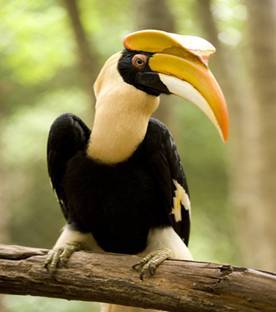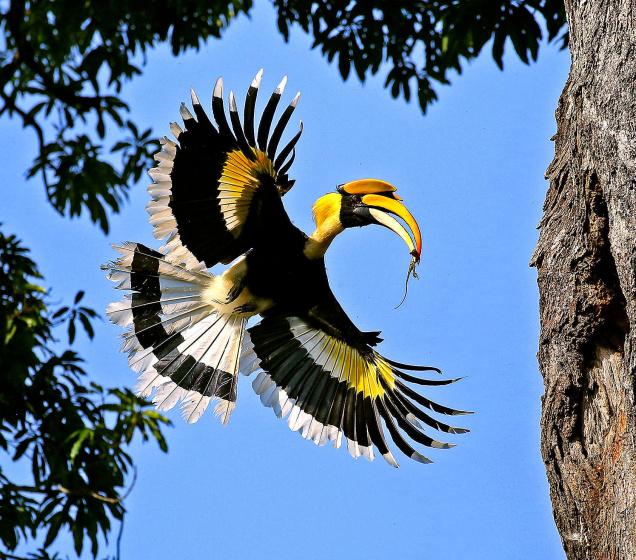Athirappilly, located to the east of Chalakudy in Thrissur
District, is a famous holiday destination in the state of Kerala. Situated on
the fringes of Sholayar forests of the Western Ghats, which are the rain
forests of Kerala, Athirappilly is famous mostly for its 42 meter high
waterfalls.
Athirappilly, lying at an average elevation of 300 meters
above sea level, consists of 14850 hectares of tropical wet, evergreen,
semi-evergreen and moist deciduous riparian forest ranges. Athirappilly forests
is one among the five territorial ranges of Vazhachal Forest Division, the
others being Charpa, Vazhachal, Kollathirumedu and Sholayar.
The forestland of Athirappilly is one among the world’s
biodiversity hotspots, as it is home to endangered as well as threatened
species of flora and fauna. Athirappilly also draws the attention of biologists
as its forest ranges are situated at a low altitude (300 meters), which is a
unique phenomenon in the whole of Western Ghats.
The picturesque waterfalls of Athirappilly are situated in
River Chalakudy, which originate in the upper ranges of the Western Ghats
called Anamudi Mountains. River Chalakudy flows down through the Vazhachal
Forest Division till it reaches Athirappilly. The rocky river-bed at
Athirappilly makes the river water turbulent and it gushes forward around big
rocks to form segmented water cascades. The Athirappilly waterfalls consist of
three waterfalls, the biggest of which is 42 meters high and 220 meters wide.
Athirappilly is the abode of Kadars, which is a primitive
tribal group in Kerala. Kadars, who reside in hilly forest areas, are
specialised collectors of honey, wax, sago, cardamom, ginger, etc.
The natural riparian ecosystem at Athirappilly consists of
about 319 species of flowers of which 24 are endemic to the Western Ghats and
10 are rare and endangered. Out of 85 species of fresh water fish found in
River Chalakudy, 35 are endemic and 9 are endangered species.
The Athirappilly Forest Ranges is also the natural habitat
of species like the great hornbill, Malabar pied hornbill, Malabar grey
hornbill, Indian grey hornbill, Asiatic elephant, tiger, leopard, bison, sambar
and lion-tailed macaque.
Athirappilly tourism offers excursions to picnic spots like
Vazhachal Waterfalls, Charpa Falls, Anakkayam, Malakkapari/ Vaparai,
Thumpurmuzhi Gardens, Peringalkuthu & Sholayar Dams, Vazhachal Forest
Gardens and Parambikulam and Malayattur Wildlife Sanctuaries. Athirappilly also
offers adventure activities like river rafting, trekking, etc.
Athirappilly is located at a distance of 63 km from Thrissur
and 30 km from Chalakudy, on State Highway 21. The vicinity of Athirappilly to
Coimbatore and Ernakulam makes it a popular holiday destination. September to
February is the best time to visit Athirappilly.
Kochi airport is the nearest airport to Athirappilly which
is 55 km away. Kochi and Thrissur are two major railways junctions which lie at
78 km and 66 km away, respectively. The nearest railway station is Chalakudy
Railway Station at 31 km from Athirappilly.








































